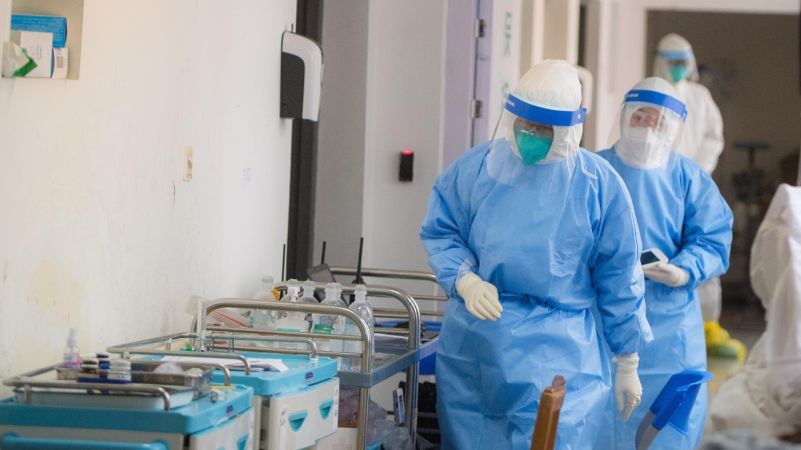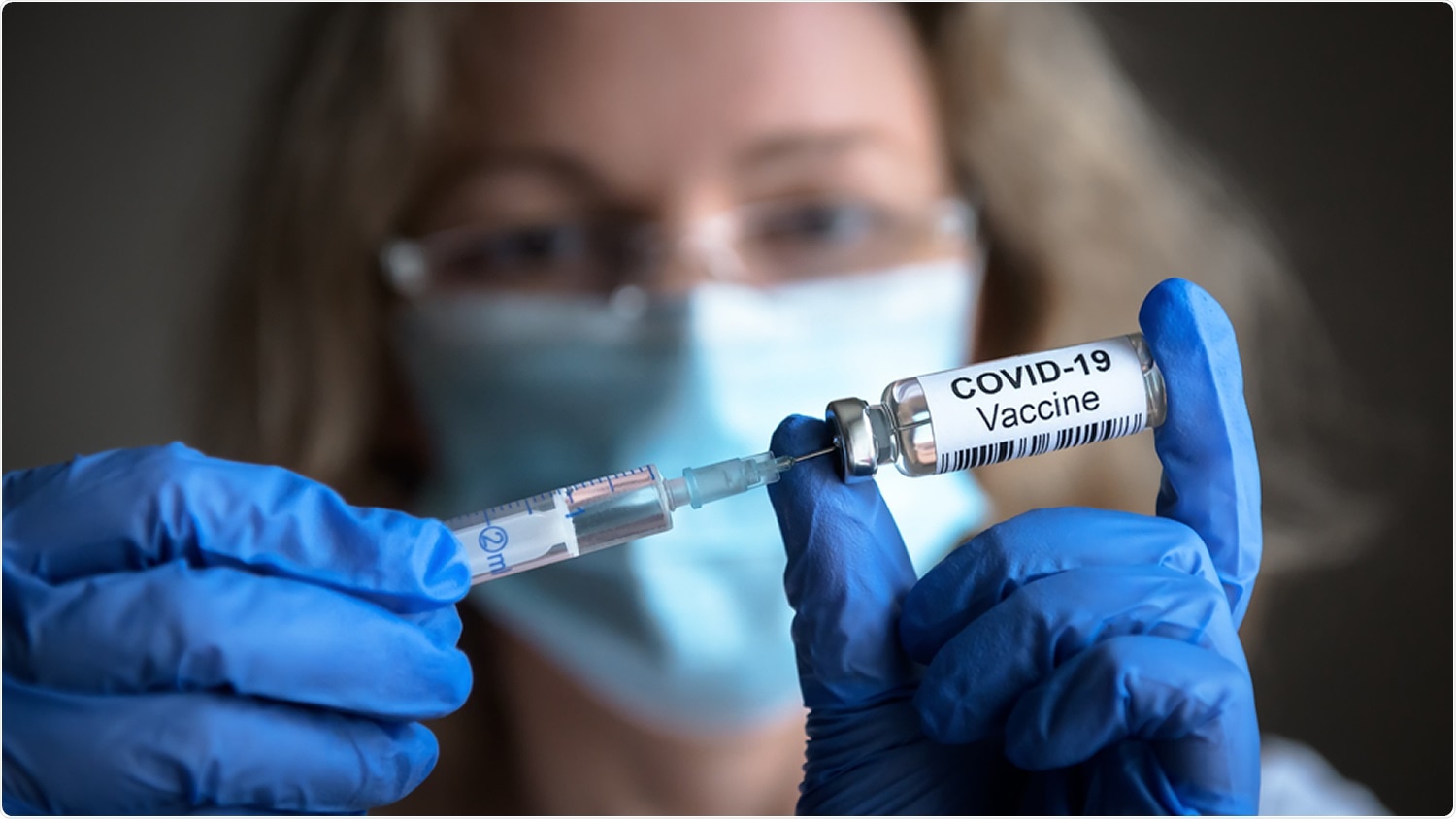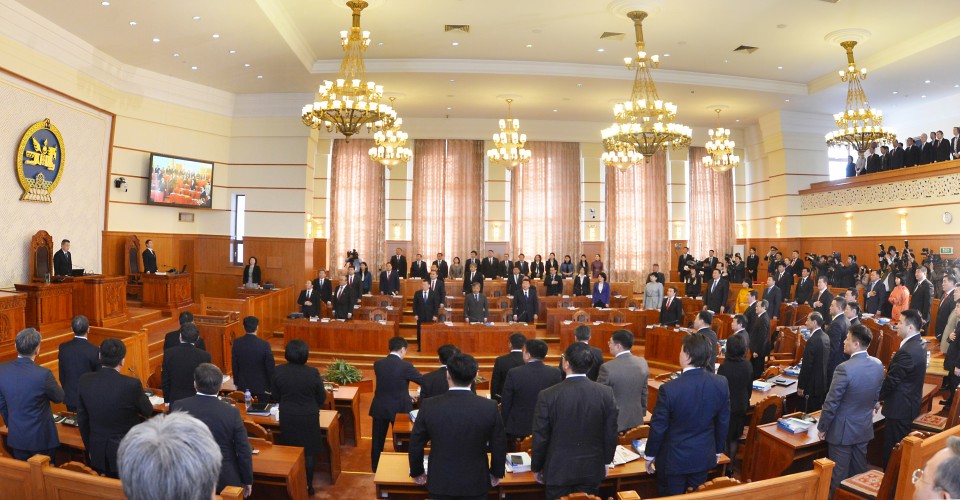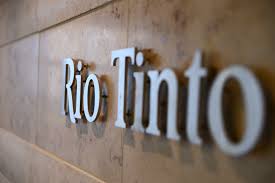Events
| Name | organizer | Where |
|---|---|---|
| MBCC “Doing Business with Mongolia seminar and Christmas Receptiom” Dec 10. 2025 London UK | MBCCI | London UK Goodman LLC |
NEWS

Detailed exploration to be conducted at Asgat deposit www.montsame.mn
At its meeting on January 21, Parliamentary Standing Committee on Industrialization approved a resolution on giving direction to the Government of Mongolia.
It is considered vital to put the Asgat silver deposit, a large deposit of strategic importance, into economic circulation. With the resolution, the Government of Mongolia is instructed to carry out additional exploration activities at the deposit to fully define the amount of resources, and announce the bidding to conduct the additional exploration in line with the relevant laws and regulations by the first half of 2022.
In his presentation, the head of the working group in charge of developing the draft resolution, MP T.Aubakir highlighted that the Government should be instructed to conduct the detailed exploration of the deposit regionally and redefine its resources by 2024.
Exploration and geological survey on the Asgat Silver Deposit, located in Nogoonnur soum of Bayan-Ulgii aimag in the western region of Mongolia, were first made in 1953 to continue until 1990. The study concluded its silver deposit at 7369.8 tons and copper and other mixed metal minerals at 227,436 tons.

Mongolia registers 2,089 new COVID-19 cases www.xinhuanet.com
Jan.24 (Xinhua) -- Mongolia's health ministry on Monday confirmed 2,089 new COVID-19 infections in the last 24 hours, raising the national tally to 429,677.
The latest confirmed cases were all locally transmitted, more than half of them in the national capital of Ulan Bator, which is the hardest hit by COVID-19.
Meanwhile, no more COVID-19-related deaths were reported in the past day, and the country's death toll remains at 2,021, it said.
The Omicron cases currently account for over 90 percent of the daily total in the country, according to the National Center for Communicable Diseases.
So far, 66.7 percent of the country's total population of 3.4 million have received two COVID-19 vaccine doses, while more than 994,600 people aged over 18 have received a booster.
More than 67,200 Mongolians have received a fourth dose, which the country started to administer on Jan. 7 on a voluntary basis.

Foreign trade of China's Inner Mongolia exceeds 19 bln USD www.xinhuanet.com
Jan. 21 (Xinhua) -- Foreign trade volume of north China's Inner Mongolia Autonomous Region reached approximately 123.6 billion yuan (about 19.5 billion U.S. dollars) in 2021, up 17.2 percent year on year, said the local authorities.
The region's exports during the period surged over 37 percent year on year to more than 47.8 billion yuan, while its imports grew 7.4 percent to around 75.7 billion yuan, said the regional government during a press conference held Thursday.
Its main export products included steel products, electromechanical products, and organic chemicals. Inner Mongolia's imported copper ore and iron ore increased sharply despite the soaring prices.
Notably, the region's private sector took the lead in boosting foreign trade growth. The total foreign trade volume contributed by private enterprises increased 14.4 percent year on year to over 81 billion yuan, accounting for 65.7 percent of the region's total.

CDC: Boosters effective against hospitalization www.nhk.or.jp
The US Centers for Disease Control and Prevention says new research shows a booster dose of a coronavirus vaccine is 90 percent effective in preventing hospitalization due to infection with the Omicron variant.
The CDC on Friday released its study on the effectiveness of booster shots of the Pfizer and Moderna vaccines, based on data from medical institutions across the country.
It says that two doses of the vaccine were 81 percent effective against hospitalization after six months when the Delta variant was surging, and 57 percent when the Omicron variant became dominant.
However, a booster shot raised the effectiveness to 94 percent during the Delta wave, and to 90 percent during the Omicron surge.
Unvaccinated people aged between 50 and 64 are 44 times more likely to be hospitalized for COVID-19, compared to fully vaccinated and boosted individuals. The figure rose to 49 times among those aged 65 or older.
CDC Director Rochelle Walensky said the research demonstrates that protection against hospitalization is higher for those who have had booster shots. She urged people who are eligible to get their booster shot to get it as soon as possible.

Mongolia adds 2,766 new COVID-19 cases www.xinhuanet.com
Jan. 23 (Xinhua) -- Mongolia's Health Ministry on Sunday confirmed 2,766 new COVID-19 cases over the past 24 hours, bringing the total confirmed cases to 427,588.
The latest confirmed cases were all locally transmitted, and among them, 1,633 were detected in the national capital Ulan Bator, the ministry said.
Meanwhile, one more COVID-19 patient died in the past day, pushing the national death toll to 2,021.
The Omicron cases currently account for over 90 percent of daily new infections in the country, according to the National Center for Communicable Diseases.
So far, 66.7 percent of the country's total population of 3.4 million have received two COVID-19 vaccine doses, while more than 994,000 people aged over 18 have received a booster.
More than 65,500 Mongolians have received a fourth dose, which the country started to administer on Jan. 7 on a voluntary basis.

Tugstsogt Nyambayar, Sakaria Lukas fight to split-decision draw www.sports.yahoo.com
Tugstsogt Nyambayar is fortunate he didn’t lose for the third time in his last four fights.
The featherweight contender was a heavy favorite to beat late replacement Sakaria Lukas but had to settle for a split-decision draw in 10-round bout on the Gary Russell Jr.-Mark Magsayo card Saturday in Atlantic City, New Jersey.
And had an apparent knockdown of Nyambayar in Round 8 been scored as such, the Namibian would’ve won the fight.
Nyambayar (12-2-1, 9 KOs) lost wide decisions to Russell, a 126-pound titleholder, and Chris Colbert in 2020 and last July. The 2012 Olympic silver medalist from Mongolia hoped on Saturday to get another victory under his belt and take a step toward another shot at a title.
Sakaria, who took the fight on short notice, had other ideas. He dictated the pace much of the fight, using his jab, straight rights and a high work rate to push Nyambayar to his limits.
Nyambayar probably landed the bigger shots, which undoubtedly got the attention of the judges. However, he wasn’t as busy as his opponent.
Sakaria seemed to put Nyambayar down with a left jab early in Round 8, which would’ve given him a 10-8 round. However, referee Eddie Claudio ruled it a slip. All three judges scored the round 10-9 for Sakaria.
The final scores were 96-94 for Lukas, 96-94 for Nyambayar and 95-95. Boxing Junkie also scored it 95-95.

Amendments to be made to Law on Customs www.montsame.mn
On January 19, six members of the parliament led by MP N.Enkhbold presented a bill to Speaker G.Zandanshatar to make amendments to the Law on Customs and the Law on Customs Tariffs and Duties.
Adopted in 2008, the Law on Customs regulates the procedures and conditions to be followed for goods and products crossing the border, the rights and obligations of customs organizations and officers, and resolution of matters concerning decisions made by customs organizations.
In recent years, in the framework of the policy to renew military aviation equipment and increase the involvement of the Mongolian Armed Forces in UN peacekeeping operations, military equipment and supplies are being received through intergovernmental agreements as non-refundable aid.
However, due to certain factors such as the amount of time needed to obtain permits for the military equipment and supplies to be exempt from duties and VAT, there have been cases where other corresponding works are postponed, unplanned expenses arise, and the recommended storage conditions for the supplies are not adhered to.
Thus, it has become necessary to reflect the necessary legal regulations to facilitate the customs clearance procedure for goods and products being received through non-refundable aid for defense purposes as well as those being supplied through procurement contracts.
Incidentally, international military exercises have been regularly organized in the country over the last 20 years.

Football for schools program to be implemented www.montsame.mn
The ‘Public or School Football’ program will be implemented by the Mongolian Football Federation, FIFA and the Ministry of Education and Science of Mongolia.
Within the program to be implemented until 2027, the parties will establish a memorandum of understanding and cooperate in training ‘C’ coaches of AFC in 21 aimags of Mongolia, training one physical education teacher to every school as a football teacher and coach, delivering online football lessons to teachers, and 2,100 balls to schools as well as organizing an annual football tournament.
To improve football environment at schools, the football pitches of 79th and 24th schools and Technical and Technological Institute were already renovated in accordance with international standards. In 2022, it is planned to renovate the football pitches of 52nd, 34th, 28th, 2nd and Oyun Undraa education complex schools.
On January 21, Minister of Education and Science L.Enkh-Amgalan expressed he would cooperate in the project.
The football for schools program is believed to reduce discrimination, increase human development and participation rather than prioritizing success, make the sport more accessible to children and ensure safety

President meets members of First Runner Up at ABU Robocon 2021 www.montsame.mn
A team of Mongolian students won the First Runner Up at the ABU Robocon 2021 contest, virtually organized last December in China. By doing so, it further solidified Mongolia’s achievement at the international Robocon contest in 2019.
President U. Khurelsukh congratulated members of the team studying at the Mongolian University of Science and Technology (MUST) and the Mongolian National Defense University (MNDU), who represented the country in the contest.
The President said he hopes that the competition will surely develop children and youth’s engineering mindset, increase their desire to study in the field, and consequently, Mongolia will have the best engineers in the future.
21 teams from 11 countries including China, Hong Kong, Japan, Malaysia, and Indonesia competed at the 20th ABU Robocon. A team from Indonesia won the Grand Prix, followed by the Mongolian team from MUST led by Ts. Khurelbaatar, and a team from China, respectively.
The game for this year’s contest was based on the traditional Chinese game ‘pitch-pot’ or throwing arrows to a pot.
ABU Robocon 2019 was organized in Ulaanbaatar by Asia-Pacific Broadcasting Union in collaboration with Mongolian National Broadcasting (MNB) under the auspices of Prime Minister U. Khurelsukh.
The MNB's ‘Young Inventor’ program, which has been suspended for some period of time, is planned to be aired again from this year under the auspices of the President of Mongolia.

Serbia revokes Rio Tinto lithium mine permits following protests www.bbc.com
Serbia has withdrawn the exploration licences of Anglo-Australian mining company Rio Tinto following weeks of protests over plans for a lithium mine.
"All permits were annulled... we put an end to Rio Tinto in Serbia," Prime Minister Ana Brnabic said on Thursday.
The decision comes just weeks ahead of Serbia's general election in April.
Relations between Belgrade and Canberra have also soured recently over Australia's treatment and deportation of Serbian tennis star Novak Djokovic.
Djokovic, the world's number one men's tennis player who was unable to compete in the Australian Open, has supported the protests against the controversial mine.
In December, he posted images on social media of demonstrators and green landscapes along with comments written in Serbian such as "clean air and water are the keys to health" and "nature is our mother".
Thousands of demonstrators have been taking to the streets in recent months, blocking main roads in several cities, including the capital Belgrade and the country's second-largest city Novi Sad.
They say the development of a large mine near the town of Loznica in the western Jadar Valley could cause irreparable damage to the landscape and contaminate the region's water supplies.
Rio Tinto had previously said that any mining development in the country would meet both domestic and European Union environmental standards.
Speaking at a news conference in Belgrade on Thursday, Ms Brnabic - Serbia's first woman and first openly gay prime minister - said the decision to abandon the $2.4bn (£1.8bn; A$3.3bn) Jadar lithium mine was made in response to requests from environmental groups.
The project had been due to start production in 2027.
Rio Tinto's shares tumbled in Australia following the news, and were down more than 4% after markets opened in London.
It is undoubtedly tempting to look for a link between Australia's treatment of Novak Djokovic and Serbia's cancellation of Rio Tinto's mining project.
After all, it does have headquarters in Melbourne as well as London. And Serbia's prime minister, Ana Brnabic, announced the demise of the much-trumpeted lithium extraction operation just days after her counterpart in Australia cheered the deportation of Serbia's sporting icon.
The cancelled project is more likely a victim of Serbia's domestic politics, rather than a bizarre diplomatic tit-for-tat. Novak Djokovic is important to Serbia - but not as important as the $2.4bn which the mining giant had promised to invest.
In fact, pulling the plug is a reaction to months of protests. The movement has surprised Serbia's authorities with its organisation, unity and broad support going well beyond the usual coalition of opposition activists.
The government does not want to go into April's elections against a backdrop of blocked roads and accusations about favouring foreign investors over local interests.
But the environmentalists say they will continue protesting until the authorities issue a permanent ban on lithium mining.
In December, local authorities in western Serbia scrapped a plan to allocate land for a lithium mine in the region.
President Aleksandar Vucic had said that the opening of such a mine would require approval following an environmental study and a referendum.
In a statement to Reuters news agency, the Australian government said it regretted Serbia's decision: "We note the strong economic benefits of the significant investment by Rio Tinto in Serbia," it said.
Lithium is the main component of the batteries used in electric vehicles and demand for the element is increasing.
The World Bank estimates that globally the production of lithium will need to increase by 500% by 2050.
- «
- 1
- 2
- 3
- 4
- 5
- 6
- 7
- 8
- 9
- 10
- 11
- 12
- 13
- 14
- 15
- 16
- 17
- 18
- 19
- 20
- 21
- 22
- 23
- 24
- 25
- 26
- 27
- 28
- 29
- 30
- 31
- 32
- 33
- 34
- 35
- 36
- 37
- 38
- 39
- 40
- 41
- 42
- 43
- 44
- 45
- 46
- 47
- 48
- 49
- 50
- 51
- 52
- 53
- 54
- 55
- 56
- 57
- 58
- 59
- 60
- 61
- 62
- 63
- 64
- 65
- 66
- 67
- 68
- 69
- 70
- 71
- 72
- 73
- 74
- 75
- 76
- 77
- 78
- 79
- 80
- 81
- 82
- 83
- 84
- 85
- 86
- 87
- 88
- 89
- 90
- 91
- 92
- 93
- 94
- 95
- 96
- 97
- 98
- 99
- 100
- 101
- 102
- 103
- 104
- 105
- 106
- 107
- 108
- 109
- 110
- 111
- 112
- 113
- 114
- 115
- 116
- 117
- 118
- 119
- 120
- 121
- 122
- 123
- 124
- 125
- 126
- 127
- 128
- 129
- 130
- 131
- 132
- 133
- 134
- 135
- 136
- 137
- 138
- 139
- 140
- 141
- 142
- 143
- 144
- 145
- 146
- 147
- 148
- 149
- 150
- 151
- 152
- 153
- 154
- 155
- 156
- 157
- 158
- 159
- 160
- 161
- 162
- 163
- 164
- 165
- 166
- 167
- 168
- 169
- 170
- 171
- 172
- 173
- 174
- 175
- 176
- 177
- 178
- 179
- 180
- 181
- 182
- 183
- 184
- 185
- 186
- 187
- 188
- 189
- 190
- 191
- 192
- 193
- 194
- 195
- 196
- 197
- 198
- 199
- 200
- 201
- 202
- 203
- 204
- 205
- 206
- 207
- 208
- 209
- 210
- 211
- 212
- 213
- 214
- 215
- 216
- 217
- 218
- 219
- 220
- 221
- 222
- 223
- 224
- 225
- 226
- 227
- 228
- 229
- 230
- 231
- 232
- 233
- 234
- 235
- 236
- 237
- 238
- 239
- 240
- 241
- 242
- 243
- 244
- 245
- 246
- 247
- 248
- 249
- 250
- 251
- 252
- 253
- 254
- 255
- 256
- 257
- 258
- 259
- 260
- 261
- 262
- 263
- 264
- 265
- 266
- 267
- 268
- 269
- 270
- 271
- 272
- 273
- 274
- 275
- 276
- 277
- 278
- 279
- 280
- 281
- 282
- 283
- 284
- 285
- 286
- 287
- 288
- 289
- 290
- 291
- 292
- 293
- 294
- 295
- 296
- 297
- 298
- 299
- 300
- 301
- 302
- 303
- 304
- 305
- 306
- 307
- 308
- 309
- 310
- 311
- 312
- 313
- 314
- 315
- 316
- 317
- 318
- 319
- 320
- 321
- 322
- 323
- 324
- 325
- 326
- 327
- 328
- 329
- 330
- 331
- 332
- 333
- 334
- 335
- 336
- 337
- 338
- 339
- 340
- 341
- 342
- 343
- 344
- 345
- 346
- 347
- 348
- 349
- 350
- 351
- 352
- 353
- 354
- 355
- 356
- 357
- 358
- 359
- 360
- 361
- 362
- 363
- 364
- 365
- 366
- 367
- 368
- 369
- 370
- 371
- 372
- 373
- 374
- 375
- 376
- 377
- 378
- 379
- 380
- 381
- 382
- 383
- 384
- 385
- 386
- 387
- 388
- 389
- 390
- 391
- 392
- 393
- 394
- 395
- 396
- 397
- 398
- 399
- 400
- 401
- 402
- 403
- 404
- 405
- 406
- 407
- 408
- 409
- 410
- 411
- 412
- 413
- 414
- 415
- 416
- 417
- 418
- 419
- 420
- 421
- 422
- 423
- 424
- 425
- 426
- 427
- 428
- 429
- 430
- 431
- 432
- 433
- 434
- 435
- 436
- 437
- 438
- 439
- 440
- 441
- 442
- 443
- 444
- 445
- 446
- 447
- 448
- 449
- 450
- 451
- 452
- 453
- 454
- 455
- 456
- 457
- 458
- 459
- 460
- 461
- 462
- 463
- 464
- 465
- 466
- 467
- 468
- 469
- 470
- 471
- 472
- 473
- 474
- 475
- 476
- 477
- 478
- 479
- 480
- 481
- 482
- 483
- 484
- 485
- 486
- 487
- 488
- 489
- 490
- 491
- 492
- 493
- 494
- 495
- 496
- 497
- 498
- 499
- 500
- 501
- 502
- 503
- 504
- 505
- 506
- 507
- 508
- 509
- 510
- 511
- 512
- 513
- 514
- 515
- 516
- 517
- 518
- 519
- 520
- 521
- 522
- 523
- 524
- 525
- 526
- 527
- 528
- 529
- 530
- 531
- 532
- 533
- 534
- 535
- 536
- 537
- 538
- 539
- 540
- 541
- 542
- 543
- 544
- 545
- 546
- 547
- 548
- 549
- 550
- 551
- 552
- 553
- 554
- 555
- 556
- 557
- 558
- 559
- 560
- 561
- 562
- 563
- 564
- 565
- 566
- 567
- 568
- 569
- 570
- 571
- 572
- 573
- 574
- 575
- 576
- 577
- 578
- 579
- 580
- 581
- 582
- 583
- 584
- 585
- 586
- 587
- 588
- 589
- 590
- 591
- 592
- 593
- 594
- 595
- 596
- 597
- 598
- 599
- 600
- 601
- 602
- 603
- 604
- 605
- 606
- 607
- 608
- 609
- 610
- 611
- 612
- 613
- 614
- 615
- 616
- 617
- 618
- 619
- 620
- 621
- 622
- 623
- 624
- 625
- 626
- 627
- 628
- 629
- 630
- 631
- 632
- 633
- 634
- 635
- 636
- 637
- 638
- 639
- 640
- 641
- 642
- 643
- 644
- 645
- 646
- 647
- 648
- 649
- 650
- 651
- 652
- 653
- 654
- 655
- 656
- 657
- 658
- 659
- 660
- 661
- 662
- 663
- 664
- 665
- 666
- 667
- 668
- 669
- 670
- 671
- 672
- 673
- 674
- 675
- 676
- 677
- 678
- 679
- 680
- 681
- 682
- 683
- 684
- 685
- 686
- 687
- 688
- 689
- 690
- 691
- 692
- 693
- 694
- 695
- 696
- 697
- 698
- 699
- 700
- 701
- 702
- 703
- 704
- 705
- 706
- 707
- 708
- 709
- 710
- 711
- 712
- 713
- 714
- 715
- 716
- 717
- 718
- 719
- 720
- 721
- 722
- 723
- 724
- 725
- 726
- 727
- 728
- 729
- 730
- 731
- 732
- 733
- 734
- 735
- 736
- 737
- 738
- 739
- 740
- 741
- 742
- 743
- 744
- 745
- 746
- 747
- 748
- 749
- 750
- 751
- 752
- 753
- 754
- 755
- 756
- 757
- 758
- 759
- 760
- 761
- 762
- 763
- 764
- 765
- 766
- 767
- 768
- 769
- 770
- 771
- 772
- 773
- 774
- 775
- 776
- 777
- 778
- 779
- 780
- 781
- 782
- 783
- 784
- 785
- 786
- 787
- 788
- 789
- 790
- 791
- 792
- 793
- 794
- 795
- 796
- 797
- 798
- 799
- 800
- 801
- 802
- 803
- 804
- 805
- 806
- 807
- 808
- 809
- 810
- 811
- 812
- 813
- 814
- 815
- 816
- 817
- 818
- 819
- 820
- 821
- 822
- 823
- 824
- 825
- 826
- 827
- 828
- 829
- 830
- 831
- 832
- 833
- 834
- 835
- 836
- 837
- 838
- 839
- 840
- 841
- 842
- 843
- 844
- 845
- 846
- 847
- 848
- 849
- 850
- 851
- 852
- 853
- 854
- 855
- 856
- 857
- 858
- 859
- 860
- 861
- 862
- 863
- 864
- 865
- 866
- 867
- 868
- 869
- 870
- 871
- 872
- 873
- 874
- 875
- 876
- 877
- 878
- 879
- 880
- 881
- 882
- 883
- 884
- 885
- 886
- 887
- 888
- 889
- 890
- 891
- 892
- 893
- 894
- 895
- 896
- 897
- 898
- 899
- 900
- 901
- 902
- 903
- 904
- 905
- 906
- 907
- 908
- 909
- 910
- 911
- 912
- 913
- 914
- 915
- 916
- 917
- 918
- 919
- 920
- 921
- 922
- 923
- 924
- 925
- 926
- 927
- 928
- 929
- 930
- 931
- 932
- 933
- 934
- 935
- 936
- 937
- 938
- 939
- 940
- 941
- 942
- 943
- 944
- 945
- 946
- 947
- 948
- 949
- 950
- 951
- 952
- 953
- 954
- 955
- 956
- 957
- 958
- 959
- 960
- 961
- 962
- 963
- 964
- 965
- 966
- 967
- 968
- 969
- 970
- 971
- 972
- 973
- 974
- 975
- 976
- 977
- 978
- 979
- 980
- 981
- 982
- 983
- 984
- 985
- 986
- 987
- 988
- 989
- 990
- 991
- 992
- 993
- 994
- 995
- 996
- 997
- 998
- 999
- 1000
- 1001
- 1002
- 1003
- 1004
- 1005
- 1006
- 1007
- 1008
- 1009
- 1010
- 1011
- 1012
- 1013
- 1014
- 1015
- 1016
- 1017
- 1018
- 1019
- 1020
- 1021
- 1022
- 1023
- 1024
- 1025
- 1026
- 1027
- 1028
- 1029
- 1030
- 1031
- 1032
- 1033
- 1034
- 1035
- 1036
- 1037
- 1038
- 1039
- 1040
- 1041
- 1042
- 1043
- 1044
- 1045
- 1046
- 1047
- 1048
- 1049
- 1050
- 1051
- 1052
- 1053
- 1054
- 1055
- 1056
- 1057
- 1058
- 1059
- 1060
- 1061
- 1062
- 1063
- 1064
- 1065
- 1066
- 1067
- 1068
- 1069
- 1070
- 1071
- 1072
- 1073
- 1074
- 1075
- 1076
- 1077
- 1078
- 1079
- 1080
- 1081
- 1082
- 1083
- 1084
- 1085
- 1086
- 1087
- 1088
- 1089
- 1090
- 1091
- 1092
- 1093
- 1094
- 1095
- 1096
- 1097
- 1098
- 1099
- 1100
- 1101
- 1102
- 1103
- 1104
- 1105
- 1106
- 1107
- 1108
- 1109
- 1110
- 1111
- 1112
- 1113
- 1114
- 1115
- 1116
- 1117
- 1118
- 1119
- 1120
- 1121
- 1122
- 1123
- 1124
- 1125
- 1126
- 1127
- 1128
- 1129
- 1130
- 1131
- 1132
- 1133
- 1134
- 1135
- 1136
- 1137
- 1138
- 1139
- 1140
- 1141
- 1142
- 1143
- 1144
- 1145
- 1146
- 1147
- 1148
- 1149
- 1150
- 1151
- 1152
- 1153
- 1154
- 1155
- 1156
- 1157
- 1158
- 1159
- 1160
- 1161
- 1162
- 1163
- 1164
- 1165
- 1166
- 1167
- 1168
- 1169
- 1170
- 1171
- 1172
- 1173
- 1174
- 1175
- 1176
- 1177
- 1178
- 1179
- 1180
- 1181
- 1182
- 1183
- 1184
- 1185
- 1186
- 1187
- 1188
- 1189
- 1190
- 1191
- 1192
- 1193
- 1194
- 1195
- 1196
- 1197
- 1198
- 1199
- 1200
- 1201
- 1202
- 1203
- 1204
- 1205
- 1206
- 1207
- 1208
- 1209
- 1210
- 1211
- 1212
- 1213
- 1214
- 1215
- 1216
- 1217
- 1218
- 1219
- 1220
- 1221
- 1222
- 1223
- 1224
- 1225
- 1226
- 1227
- 1228
- 1229
- 1230
- 1231
- 1232
- 1233
- 1234
- 1235
- 1236
- 1237
- 1238
- 1239
- 1240
- 1241
- 1242
- 1243
- 1244
- 1245
- 1246
- 1247
- 1248
- 1249
- 1250
- 1251
- 1252
- 1253
- 1254
- 1255
- 1256
- 1257
- 1258
- 1259
- 1260
- 1261
- 1262
- 1263
- 1264
- 1265
- 1266
- 1267
- 1268
- 1269
- 1270
- 1271
- 1272
- 1273
- 1274
- 1275
- 1276
- 1277
- 1278
- 1279
- 1280
- 1281
- 1282
- 1283
- 1284
- 1285
- 1286
- 1287
- 1288
- 1289
- 1290
- 1291
- 1292
- 1293
- 1294
- 1295
- 1296
- 1297
- 1298
- 1299
- 1300
- 1301
- 1302
- 1303
- 1304
- 1305
- 1306
- 1307
- 1308
- 1309
- 1310
- 1311
- 1312
- 1313
- 1314
- 1315
- 1316
- 1317
- 1318
- 1319
- 1320
- 1321
- 1322
- 1323
- 1324
- 1325
- 1326
- 1327
- 1328
- 1329
- 1330
- 1331
- 1332
- 1333
- 1334
- 1335
- 1336
- 1337
- 1338
- 1339
- 1340
- 1341
- 1342
- 1343
- 1344
- 1345
- 1346
- 1347
- 1348
- 1349
- 1350
- 1351
- 1352
- 1353
- 1354
- 1355
- 1356
- 1357
- 1358
- 1359
- 1360
- 1361
- 1362
- 1363
- 1364
- 1365
- 1366
- 1367
- 1368
- 1369
- 1370
- 1371
- 1372
- 1373
- 1374
- 1375
- 1376
- 1377
- 1378
- 1379
- 1380
- 1381
- 1382
- 1383
- 1384
- 1385
- 1386
- 1387
- 1388
- 1389
- 1390
- 1391
- 1392
- 1393
- 1394
- 1395
- 1396
- 1397
- 1398
- 1399
- 1400
- 1401
- 1402
- 1403
- 1404
- 1405
- 1406
- 1407
- 1408
- 1409
- 1410
- 1411
- 1412
- 1413
- 1414
- 1415
- 1416
- 1417
- 1418
- 1419
- 1420
- 1421
- 1422
- 1423
- 1424
- 1425
- 1426
- 1427
- 1428
- 1429
- 1430
- 1431
- 1432
- 1433
- 1434
- 1435
- 1436
- 1437
- 1438
- 1439
- 1440
- 1441
- 1442
- 1443
- 1444
- 1445
- 1446
- 1447
- 1448
- 1449
- 1450
- 1451
- 1452
- 1453
- 1454
- 1455
- 1456
- 1457
- 1458
- 1459
- 1460
- 1461
- 1462
- 1463
- 1464
- 1465
- 1466
- 1467
- 1468
- 1469
- 1470
- 1471
- 1472
- 1473
- 1474
- 1475
- 1476
- 1477
- 1478
- 1479
- 1480
- 1481
- 1482
- 1483
- 1484
- 1485
- 1486
- 1487
- 1488
- 1489
- 1490
- 1491
- 1492
- 1493
- 1494
- 1495
- 1496
- 1497
- 1498
- 1499
- 1500
- 1501
- 1502
- 1503
- 1504
- 1505
- 1506
- 1507
- 1508
- 1509
- 1510
- 1511
- 1512
- 1513
- 1514
- 1515
- 1516
- 1517
- 1518
- 1519
- 1520
- 1521
- 1522
- 1523
- 1524
- 1525
- 1526
- 1527
- 1528
- 1529
- 1530
- 1531
- 1532
- 1533
- 1534
- 1535
- 1536
- 1537
- 1538
- 1539
- 1540
- 1541
- 1542
- 1543
- 1544
- 1545
- 1546
- 1547
- 1548
- 1549
- 1550
- 1551
- 1552
- 1553
- 1554
- 1555
- 1556
- 1557
- 1558
- 1559
- 1560
- 1561
- 1562
- 1563
- 1564
- 1565
- 1566
- 1567
- 1568
- 1569
- 1570
- 1571
- 1572
- 1573
- 1574
- 1575
- 1576
- 1577
- 1578
- 1579
- 1580
- 1581
- 1582
- 1583
- 1584
- 1585
- 1586
- 1587
- 1588
- 1589
- 1590
- 1591
- 1592
- 1593
- 1594
- 1595
- 1596
- 1597
- 1598
- 1599
- 1600
- 1601
- 1602
- 1603
- 1604
- 1605
- 1606
- 1607
- 1608
- 1609
- 1610
- 1611
- 1612
- 1613
- 1614
- 1615
- 1616
- 1617
- 1618
- 1619
- 1620
- 1621
- 1622
- 1623
- 1624
- 1625
- 1626
- 1627
- 1628
- 1629
- 1630
- 1631
- 1632
- 1633
- 1634
- 1635
- 1636
- 1637
- 1638
- 1639
- 1640
- 1641
- 1642
- 1643
- 1644
- 1645
- 1646
- 1647
- 1648
- 1649
- 1650
- 1651
- 1652
- 1653
- 1654
- 1655
- 1656
- 1657
- 1658
- 1659
- 1660
- 1661
- 1662
- 1663
- 1664
- 1665
- 1666
- 1667
- 1668
- 1669
- 1670
- 1671
- 1672
- 1673
- 1674
- 1675
- 1676
- 1677
- 1678
- 1679
- 1680
- 1681
- 1682
- 1683
- 1684
- 1685
- 1686
- 1687
- 1688
- 1689
- 1690
- 1691
- 1692
- 1693
- 1694
- »






